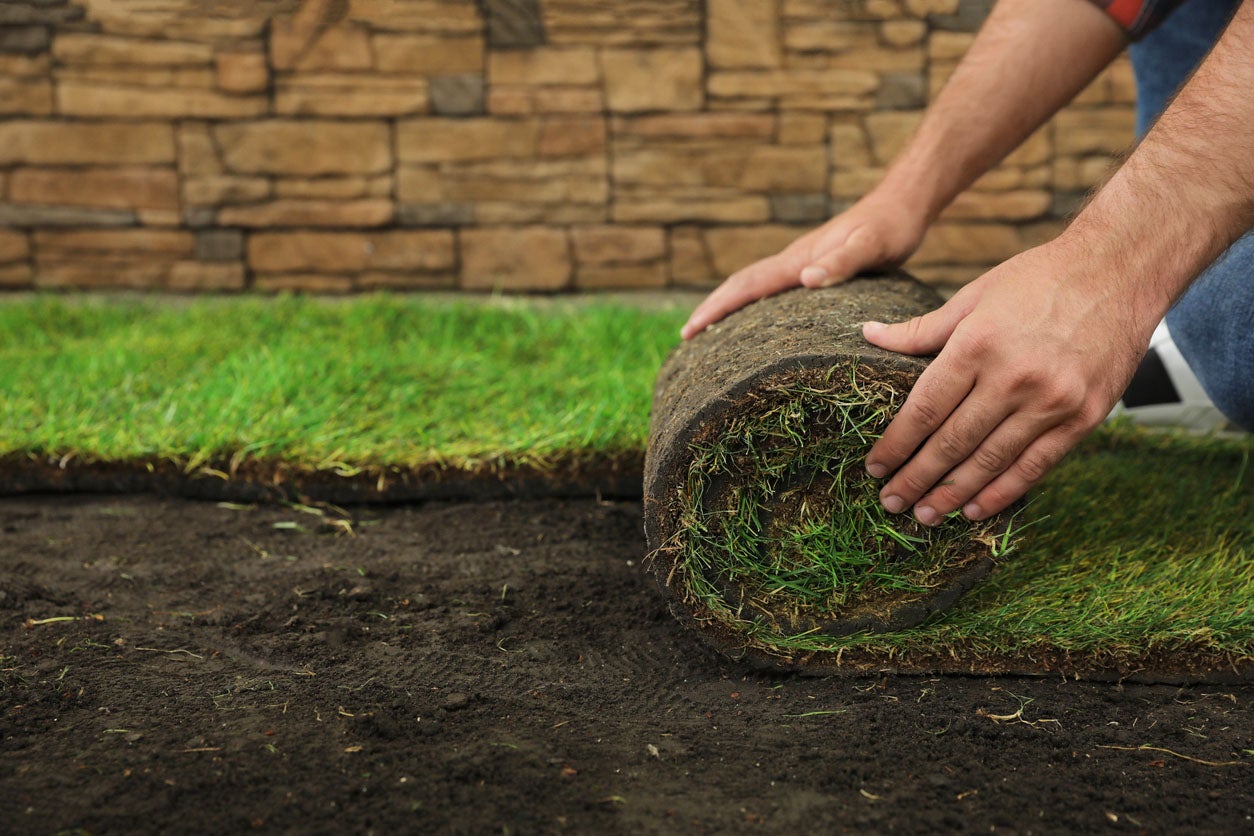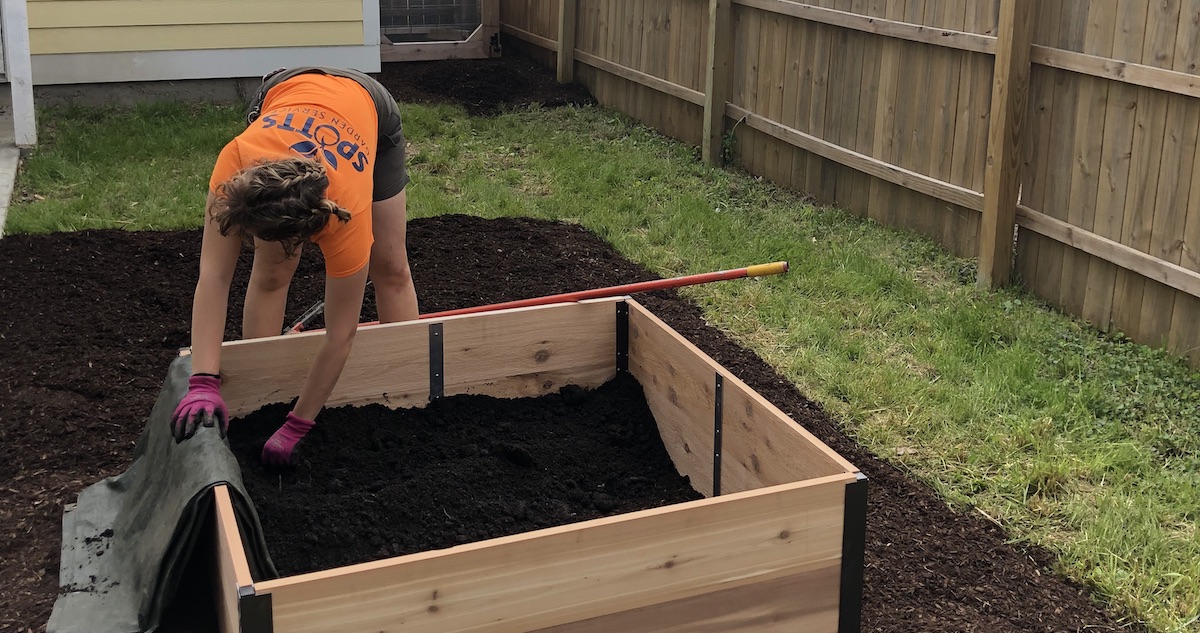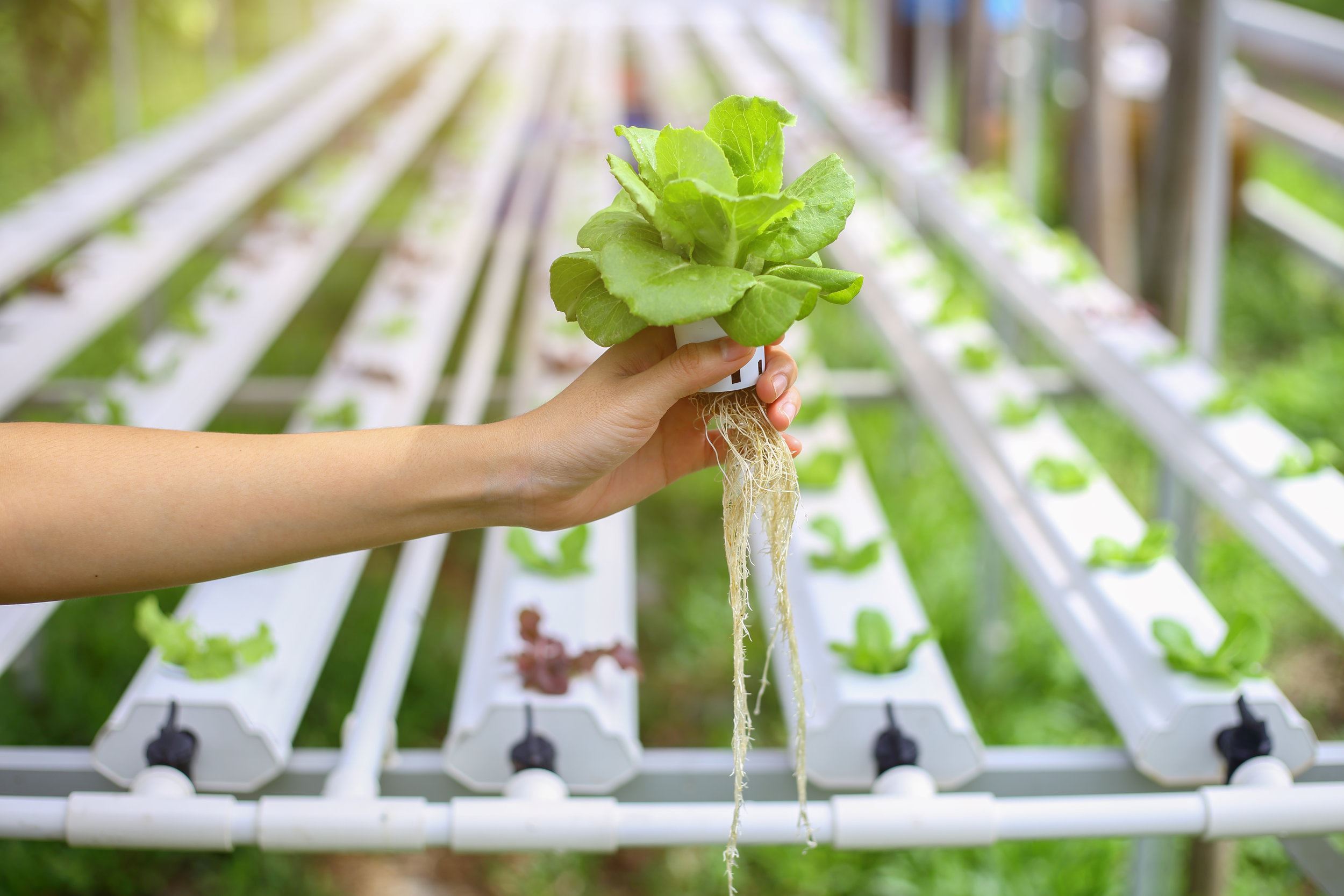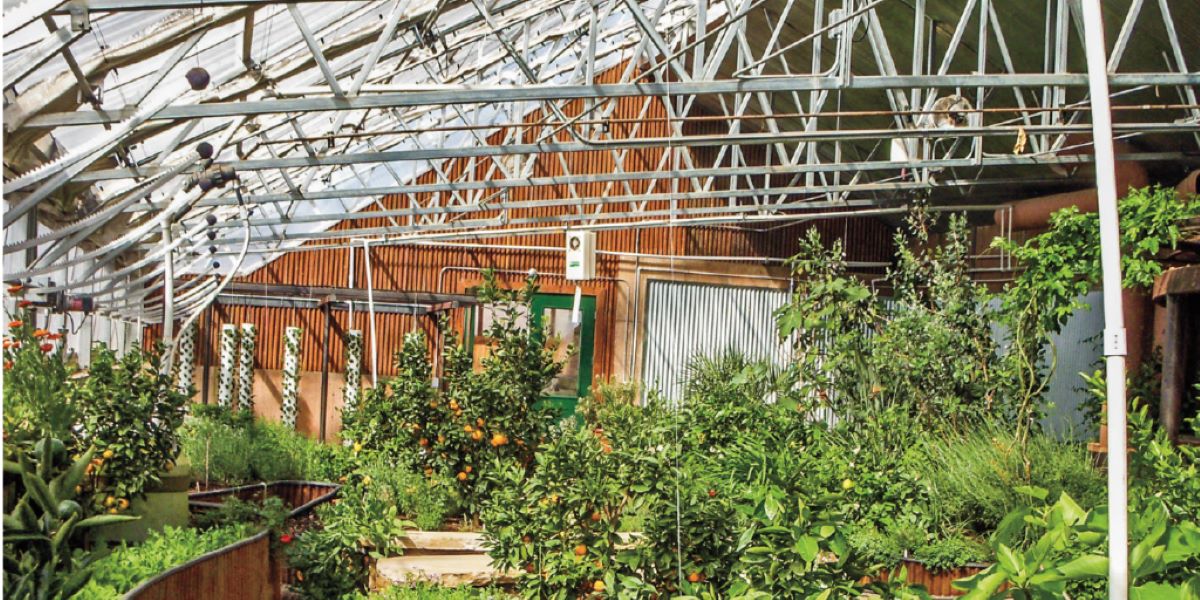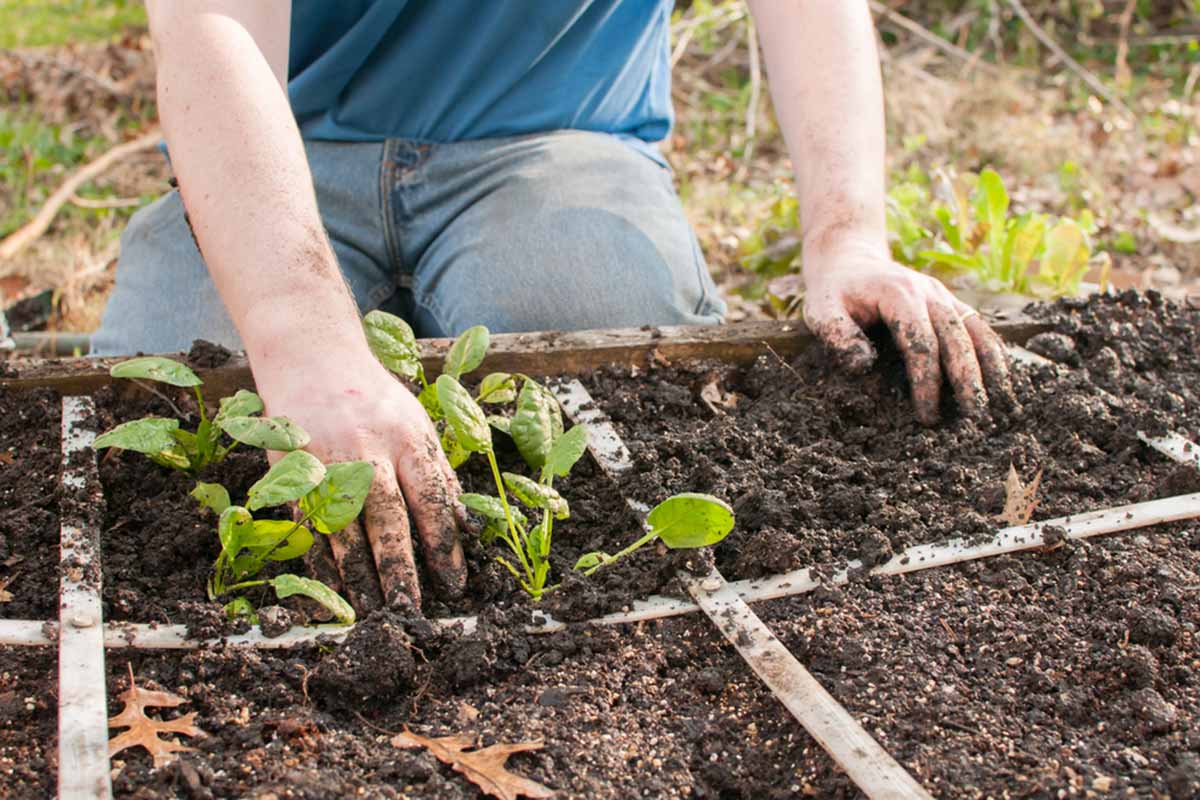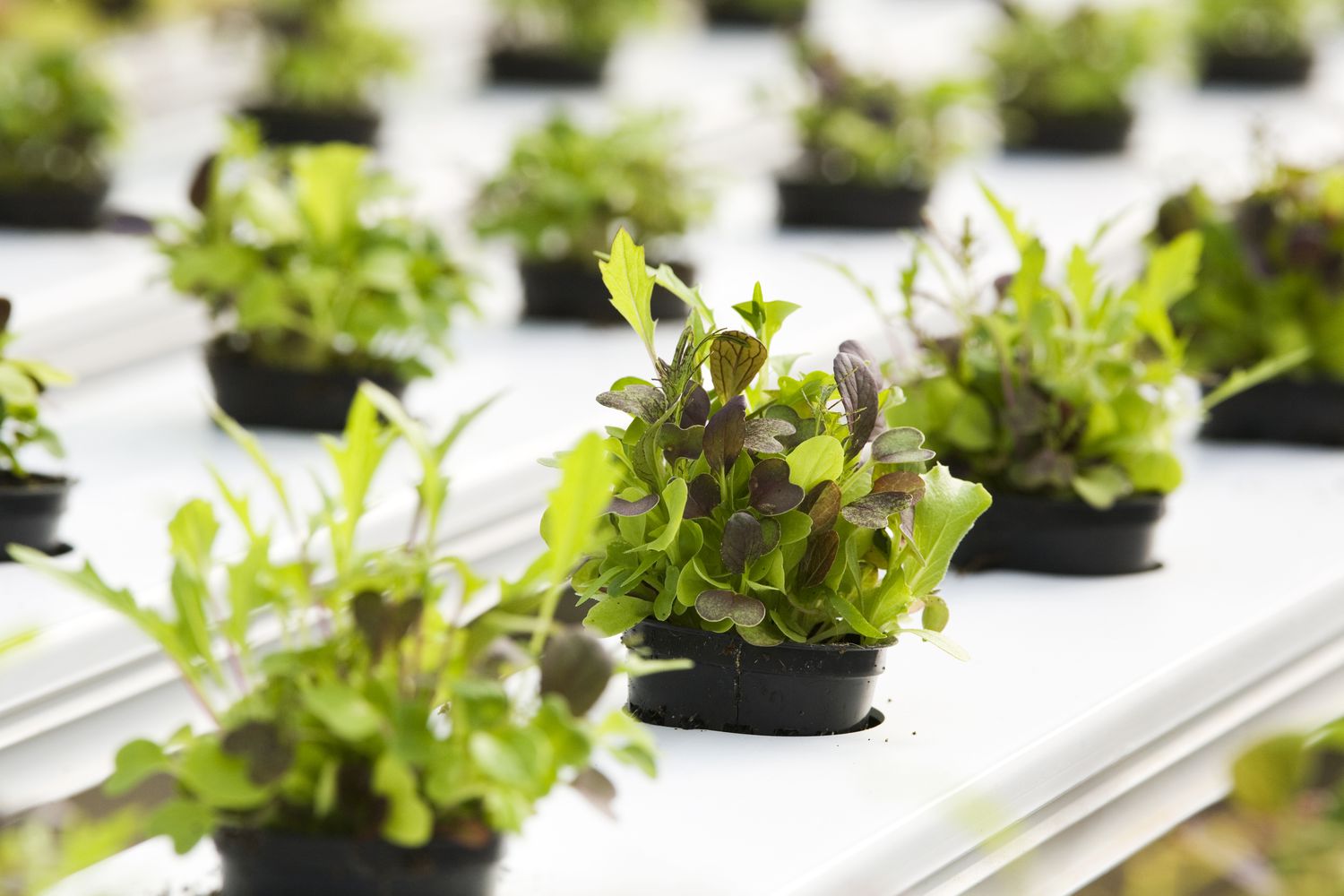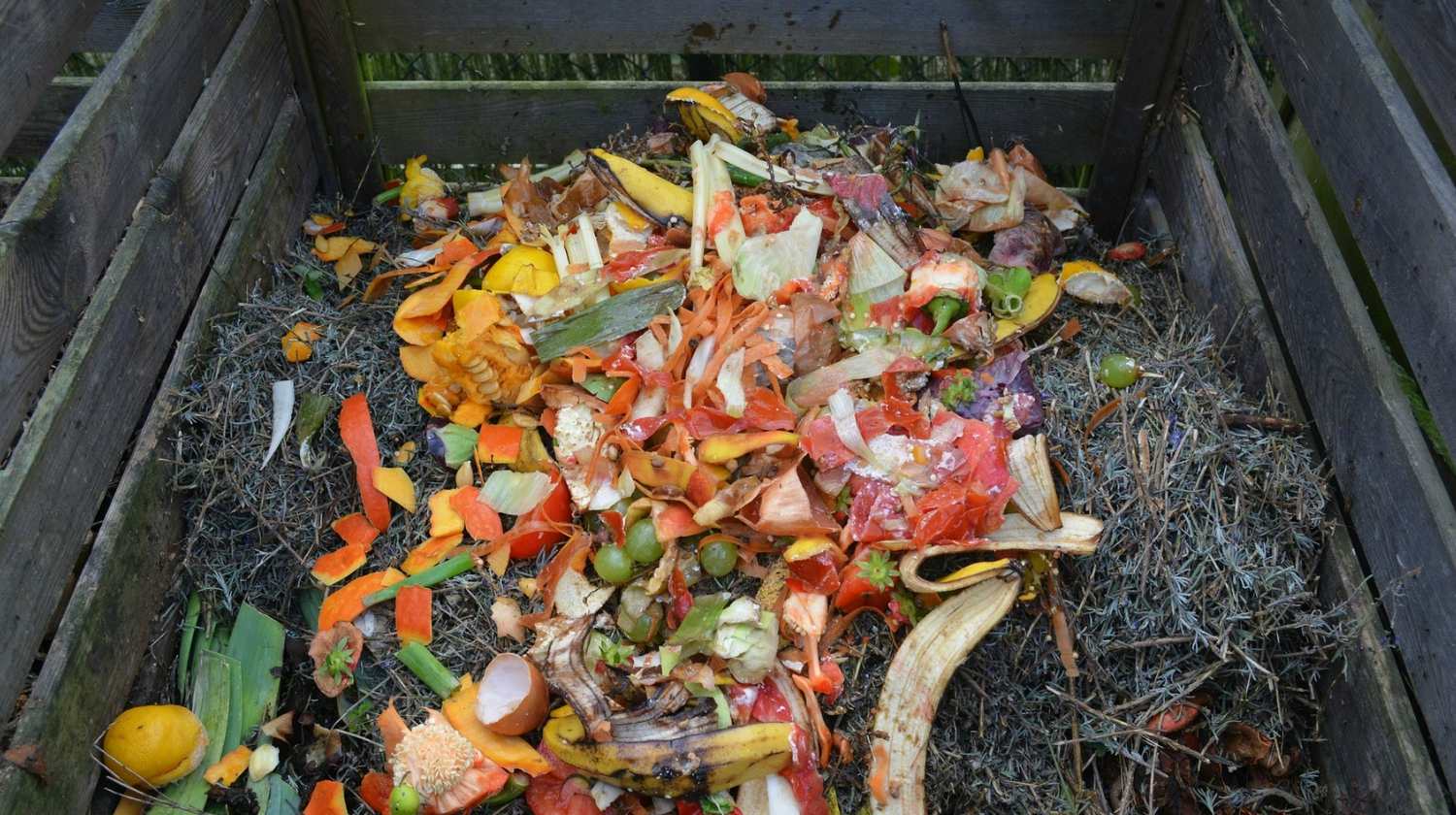Home>Gardening Tips and Tricks>Eco-Friendly Gardening>What Do I Need For Hydroponics
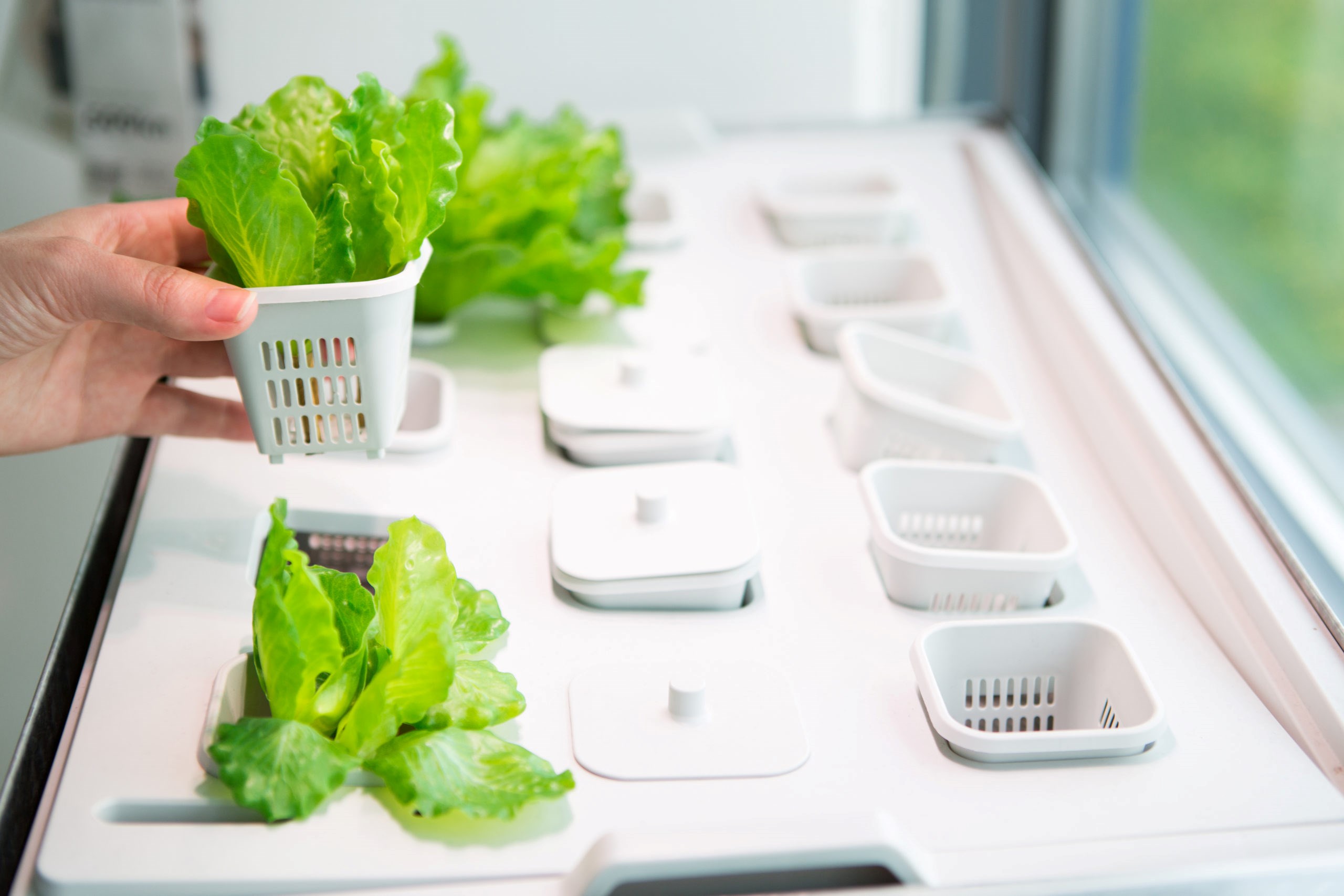

Eco-Friendly Gardening
What Do I Need For Hydroponics
Modified: January 22, 2024
Discover the eco-friendly way to garden with hydroponics! Find out what you need to get started and grow your own plants without soil.
(Many of the links in this article redirect to a specific reviewed product. Your purchase of these products through affiliate links helps to generate commission for Chicagolandgardening.com, at no extra cost. Learn more)
Table of Contents
Introduction
As our world becomes more conscious of the impact of traditional gardening practices on the environment, eco-friendly gardening methods are gaining popularity. One such method is hydroponics, a system of growing plants without soil. Hydroponics offers a sustainable and efficient way to cultivate a wide variety of plants while conserving water and minimizing the use of harmful chemicals.
Hydroponics involves growing plants in a nutrient-rich water solution that provides all the necessary elements for plant growth. By eliminating the need for soil, hydroponics offers several advantages over traditional gardening methods. It allows for precise control over moisture, nutrients, and lighting, resulting in faster growth, higher yields, and healthier plants.
Moreover, hydroponics is not limited to traditional outdoor gardening. It can be practiced indoors, making it a viable option for urban dwellers or those with limited garden space. From leafy greens and herbs to flowers and even fruiting plants, hydroponics can accommodate a wide range of plant species and growing conditions.
In this comprehensive guide, we will explore the various types of hydroponic systems, the essential components needed to set up a hydroponic garden, and the necessary steps to maintain and troubleshoot your system. Whether you are a seasoned gardener looking for a new challenge or a beginner eager to embark on an eco-friendly gardening journey, this guide will provide you with the knowledge and tools to succeed in hydroponics.
By adopting eco-friendly gardening practices such as hydroponics, we can contribute to the preservation of our environment, conserve water, reduce the use of harmful chemicals, and enjoy the pleasure of growing our own plants. So let’s dive into the world of hydroponics and discover how this innovative gardening method can transform the way we grow and appreciate plants.
Benefits of Hydroponics
Hydroponics offers a range of benefits that make it an attractive gardening method for both beginners and experienced gardeners. Let’s explore some of the key advantages:
- Increased Growth Rates: One of the primary advantages of hydroponics is that it promotes faster plant growth compared to traditional soil-based gardening. By providing plants with an optimal environment, including the right balance of nutrients and constant access to water, hydroponics enables plants to grow up to 50% faster.
- Water Conservation: With water scarcity becoming an increasingly pressing issue, hydroponics provides a sustainable solution. Hydroponic systems use as much as 90% less water compared to traditional soil-based gardening. This is because water in hydroponics is recirculated and reused, minimizing wastage and ensuring that plants receive only the necessary amount of moisture.
- Optimal Nutrient Delivery: In hydroponics, plants receive nutrients directly through the water solution, ensuring that they have access to the necessary elements for growth. This leads to more efficient nutrient absorption and eliminates the risk of nutrient deficiencies that can occur in traditional gardening due to uneven distribution of nutrients in the soil.
- Pest and Disease Control: Hydroponic systems provide a controlled and sterile environment, reducing the risk of pests and diseases that often plague traditional gardens. Without soil, common soil-borne pests and diseases are eliminated, making hydroponics a cleaner and more hygienic option.
- Year-Round Gardening: Hydroponic gardening allows for year-round cultivation, regardless of the climate or season. By controlling the lighting, temperature, and humidity levels, you can create an optimal environment for plant growth, enabling you to grow fresh produce even in the harshest of winters.
These are just some of the many benefits that hydroponics can offer. From maximizing space utilization to producing more sustainable and healthy crops, hydroponics is revolutionizing the way we garden. With careful planning and attention to detail, you can create a thriving and eco-friendly hydroponic garden in your own home.
Types of Hydroponic Systems
Hydroponic systems come in various designs, each offering unique advantages and catering to different plant types and growing environments. Let’s explore some of the most popular types of hydroponic systems:
- Drip System: In a drip system, the nutrient solution is delivered directly to the plant roots through small tubes or emitters. This system allows for precise control over nutrient delivery and can be used for a wide range of plant types. Drip systems are relatively simple to set up and are suitable for both small-scale and commercial hydroponic setups.
- Flood and Drain System: Also known as an ebb and flow system, this method involves flooding the growth tray with the nutrient solution and then draining it back into the reservoir. This cycle is repeated at regular intervals, simulating natural watering cycles. Flood and drain systems are suitable for larger plants and offer excellent oxygenation to the roots.
- NFT (Nutrient Film Technique) System: In an NFT system, a thin film of nutrient solution flows continuously over the plant roots, providing a constant supply of water and nutrients while allowing ample oxygenation. This system is commonly used for growing herbs, lettuce, and other leafy greens.
- Aeroponic System: Aeroponic systems suspend plant roots in air and mist them with nutrient-rich water, providing an oxygen-rich environment. This system promotes fast growth and is highly efficient in water usage. Aeroponics is commonly used for growing delicate plants, such as orchids and strawberries.
- Deep Water Culture (DWC) System: DWC systems involve suspending plant roots in a nutrient solution with an air stone providing oxygen. This method is simple and affordable, making it suitable for beginners. DWC systems are commonly used for growing lettuce, herbs, and other small plants.
These are just a few examples of the many hydroponic systems available. It’s important to consider factors such as space availability, plant type, and personal preferences when choosing the right system for your needs. Each system has its own set of requirements and advantages, so take the time to research and experiment to find the best fit for your hydroponic garden.
Essential Components for Hydroponics
Setting up a successful hydroponic system requires a few key components to ensure optimum plant growth and health. Let’s explore the essential elements you’ll need:
- Growing Medium: Since hydroponics eliminates the use of soil, a substitute growing medium is required to support the plants’ root systems. Common options include perlite, vermiculite, rockwool, coconut coir, or clay pebbles. The growing medium provides stability for the plants and helps to retain moisture and nutrients.
- Reservoir: The reservoir serves as the water and nutrient solution storage for the hydroponic system. It should be light-proof to prevent the growth of algae. The size of the reservoir will depend on the number of plants and the size of your system.
- Pump: A water pump is essential for circulating the nutrient solution throughout the system. It ensures that the plants receive a continuous supply of nutrients and prevents the solution from becoming stagnant.
- Air Pump and Air Stone: Oxygen is crucial for the health of plant roots. An air pump and air stone help to aerate the nutrient solution and ensure the roots receive an adequate oxygen supply. Adequate oxygenation promotes healthy root growth and prevents root rot.
Holding Tray or Growing Channels: This component holds the plants and growing medium, allowing them to be irrigated by the nutrient solution. The tray or channels should be designed to drain excess solution back into the reservoir properly.- pH and EC Meter: To maintain optimal nutrient uptake, you need to monitor the pH level and electrical conductivity (EC) of the nutrient solution. A pH meter helps you adjust the acidity or alkalinity of the solution, while an EC meter measures the nutrient concentration. Both meters are essential for maintaining a balanced and healthy system.
- Timer: A timer is useful for automating the irrigation and lighting cycles in your hydroponic system. It ensures consistency and precision in providing the necessary conditions for plant growth according to their specific needs.
- Nutrient Solution: A hydroponic nutrient solution contains all the essential elements needed for plant growth. The solution should be specifically formulated for hydroponic systems and provide a balanced mix of macronutrients (nitrogen, phosphorus, potassium) and micronutrients (iron, calcium, magnesium). Following the recommended nutrient schedule is crucial for the health and productivity of your plants.
These are just a few of the essential components required for a hydroponic system. Remember to choose high-quality materials and equipment to ensure the long-term success of your garden. By assembling these components and paying attention to their proper functioning, you will be well on your way to creating a thriving hydroponic system.
Lighting Requirements for Hydroponics
Proper lighting is crucial for the success of your hydroponic garden, as it plays a significant role in the photosynthesis process. Without adequate light, plants cannot produce the energy they need to grow and thrive. Here are some key considerations for lighting in hydroponics:
Light Intensity: Different plants have varying light intensity requirements. In general, leafy greens such as lettuce and herbs require lower light levels, while fruiting plants like tomatoes and peppers need higher intensity light. Depending on the plant species you are growing, you may need to adjust the intensity of your lighting system accordingly.
Light Duration: The duration of light exposure, or photoperiod, is essential for plant growth and flowering. Most plants require a minimum of 12-16 hours of light per day during the vegetative stage and 8-12 hours during the flowering stage. A timer can be used to automate the lighting schedule and ensure consistent light exposure.
Light Spectrum: Different wavelengths of light serve different purposes in plant growth. While all plants require a balance of blue and red light, the proportions may vary depending on the growth stage. Blue light promotes vegetative growth and compact plant structure, while red light stimulates flowering and fruiting. Full-spectrum LED grow lights are often the preferred choice in hydroponics, as they can provide the right blend of light wavelengths for optimal plant development.
Light Distance: The distance between the light source and the plants’ canopy is crucial for preventing light burn or insufficient light intensity. LED grow lights should be positioned at the appropriate distance to ensure uniform light coverage without causing heat stress or light deprivation. It’s important to refer to the manufacturer’s guidelines for the recommended distance based on the specific light fixture and plant species.
Light Distribution: To ensure even light distribution across all plants, it’s important to position the light source properly. This can be achieved by using reflective surfaces, such as Mylar or reflective films, to redirect and maximize the light reaching the plants. The use of reflective materials helps prevent light loss and ensures that all plants receive an equal amount of light.
When selecting lighting for your hydroponic system, consider energy efficiency, heat output, and lifespan. LED grow lights are a popular choice for hydroponics due to their energy efficiency, low heat emission, and long lifespan. They also offer the flexibility to adjust the light spectrum to suit different plant growth stages.
By providing the right type and intensity of light, you can optimize plant growth, flowering, and fruiting in your hydroponic system. Regularly monitor your lighting system and adjust it as needed to ensure the best results for your plants.
Nutrient Solution and Fertilizers
In hydroponics, plants rely on a nutrient-rich solution for their essential growth requirements. Unlike traditional gardening where plants derive nutrients from the soil, hydroponics requires the careful formulation and management of a nutrient solution. Here are some key factors to consider when it comes to the nutrient solution and fertilizers:
Macronutrients and Micronutrients: A well-balanced nutrient solution consists of macronutrients, which are required in large quantities, and micronutrients, which are needed in smaller amounts. Macronutrients include nitrogen (N), phosphorus (P), and potassium (K), while micronutrients encompass elements such as iron (Fe), calcium (Ca), and magnesium (Mg). Each nutrient plays a vital role in supporting different aspects of plant growth and development.
Nutrient Formulation: Nutrient formulations come in various ratios and concentrations depending on the plant’s growth stage and specific nutrient requirements. It’s crucial to follow the manufacturer’s instructions and adjust the nutrient solution accordingly to meet the specific needs of your plants.
pH and EC Levels: Maintaining the correct pH level of the nutrient solution is crucial for nutrient availability and uptake. Most plants thrive in a slightly acidic to neutral pH range, typically between 5.5 and 6.5. Monitoring the electrical conductivity (EC) of the nutrient solution also helps ensure that the proper nutrient concentration is maintained. These measurements can be easily done using a pH meter and an EC meter.
Fertilizers and Supplements: In addition to the basic nutrient solution, certain fertilizers and supplements can enhance plant growth and address specific deficiencies. For example, nitrogen-based fertilizers promote leafy growth, while phosphorus-rich fertilizers encourage root development and flowering. Iron chelates or calcium supplements may be required to address nutrient deficiencies in specific plants.
Feeding Schedule: Maintaining a consistent feeding schedule is crucial for the health and productivity of your hydroponic plants. Follow the manufacturer’s instructions for the recommended feeding intervals, ensuring that the nutrient solution is replenished regularly to meet the plants’ needs.
Water Quality: The quality of the water used to prepare the nutrient solution is essential. Ideally, use filtered or distilled water to avoid any contaminants that could harm the plants. If using tap water, it’s important to test its pH and conductivity levels and adjust them accordingly before adding nutrients.
Regular monitoring of the nutrient solution, pH, and EC levels is vital in hydroponics to ensure optimal nutrient availability and uptake. Adjustments may be necessary based on plant growth stage, environmental conditions, and nutrient deficiencies. Keeping a close eye on your plants and observing any signs of nutrient imbalance helps prevent potential issues and ensures healthy and robust growth.
pH and EC Monitoring
In hydroponics, maintaining proper pH and electrical conductivity (EC) levels in the nutrient solution is crucial for healthy plant growth and optimal nutrient uptake. pH refers to the acidity or alkalinity of a solution, while EC measures its nutrient concentration. Monitoring and adjusting these levels are key factors in hydroponic success. Here’s what you need to know about pH and EC monitoring:
pH Monitoring: The pH level of the nutrient solution directly affects nutrient availability to the plants. Most plants thrive in a slightly acidic to neutral pH range. A pH that is too high or too low can lead to nutrient deficiencies or toxicities. Regularly test the pH of your nutrient solution using a pH meter and adjust it as needed. If the pH is too high, you can lower it by using a pH down solution. Conversely, if the pH is too low, you can raise it with a pH up solution.
EC Monitoring: EC measures the concentration of nutrients in the solution, indicating its electrical conductivity. Monitoring EC helps ensure that the nutrient levels are appropriate for your particular plants. Different plants have different nutrient requirements, so it’s essential to follow recommended EC ranges for specific growth stages. Measure the EC of the nutrient solution using an EC meter and adjust it by adding more nutrients or diluting the solution with water as needed.
Importance of pH and EC Balance: Maintaining the proper balance of pH and EC is critical for plant health. When the pH is within the appropriate range, nutrient uptake is optimized, preventing deficiencies or toxicities. Likewise, maintaining the correct EC ensures that plants receive the right concentration of nutrients without overloading them. Proper pH and EC levels promote strong root development, vigorous growth, and overall plant vitality.
Adjusting pH and EC: To adjust the pH level, slowly add small amounts of pH up or pH down solution to your nutrient solution while monitoring the pH closely. It’s important to make adjustments gradually and retest the pH after each addition until the desired level is reached. Similarly, to adjust the EC level, you can add more nutrients to increase the concentration or dilute the solution with water to lower it. Always follow the manufacturer’s instructions and recommended guidelines for proper adjustments.
Regular Monitoring: pH and EC levels should be monitored regularly throughout the plant’s growth cycle. It’s a good practice to measure these levels at least once a day, or more frequently if necessary, especially during periods of rapid growth or environmental fluctuations. Keeping a log of the pH and EC measurements can help you track changes over time and identify any patterns or potential issues that may arise.
By maintaining proper pH and EC levels in your hydroponic system, you provide the optimal conditions for your plants to thrive. Regular monitoring and adjustments ensure that the nutrient solution is precisely balanced to support healthy growth, leading to productive and flourishing hydroponic gardens.
Choosing the Right Plants for Hydroponics
When it comes to hydroponics, almost any plant can be grown using this method. However, some plants are better suited for hydroponic cultivation than others. When choosing plants for your hydroponic garden, consider factors such as their growth habits, nutrient requirements, and compatibility with the hydroponic system you have in place. Here are some tips to help you select the right plants:
Leafy Greens: Lettuce, spinach, kale, and other leafy greens are well-suited for hydroponics. They have shallow root systems, grow relatively quickly, and have moderate nutrient requirements. Leafy greens thrive under lower light conditions, making them ideal for hydroponic systems with limited lighting capabilities.
Herbs: Basil, cilantro, mint, and other herbs are also popular choices for hydroponic gardens. Herbs tend to have compact growth habits and can tolerate a range of light conditions. They can be grown in smaller spaces and harvested frequently for fresh culinary use.
Vining Plants: Tomatoes, cucumbers, and other vining plants can be grown in larger hydroponic systems that provide support for their climbing nature. These plants tend to have higher light and nutrient requirements, so ensuring adequate space and light intensity is crucial for their success.
Strawberries: Strawberries can be successfully grown in hydroponic systems. They prefer neutral to slightly acidic pH levels and require good airflow around their roots. Hanging or tower systems are often used for growing strawberries hydroponically to provide proper support for the plants and allow easy access to the fruit.
Flowering Plants: If you’re interested in growing flowers hydroponically, options like roses, orchids, and marigolds can be suitable choices. These plants often have specific light and nutrient requirements, so it’s essential to research their needs and ensure proper environmental conditions are provided.
Fruit-Bearing Plants: While most fruit-bearing plants can be grown in hydroponics, it’s important to consider their size and nutrient requirements. Fruiting plants like peppers, strawberries, and compact varieties of tomatoes are well-suited for hydroponic cultivation, as they don’t require as much space as larger fruit trees.
Consider Growth Time: Some plants have shorter growth cycles, while others take longer to mature. Consider the time it takes for a plant to reach maturity and produce a harvest when selecting plants for your hydroponic garden. This will help you plan and optimize the use of your system effectively.
Personal Preferences: Ultimately, selecting plants for your hydroponic garden should align with your personal preferences and goals. Whether you’re interested in growing a variety of vegetables, herbs for culinary uses, or vibrant flowers, choose plants that you enjoy cultivating and consuming.
By considering the growth habits, nutrient requirements, and compatibility with your hydroponic system, you can select the right plants for your hydroponic garden. Remember to tailor the environment and nutrient solution to meet the specific needs of the plants you choose, and enjoy the experience of cultivating a wide range of plants using this innovative and eco-friendly gardening method.
Maintenance and Troubleshooting in Hydroponics
Maintaining a well-functioning hydroponic system is essential for the success of your garden. Regular maintenance and troubleshooting can help prevent issues and ensure optimal plant growth. Here are some key maintenance practices and troubleshooting tips for your hydroponic setup:
Cleaning and Sanitizing: Regularly cleaning and sanitizing your hydroponic system helps prevent the buildup of algae, biofilm, and pathogens. Empty and clean the reservoir, remove any debris from the system, and sanitize the components using a mild bleach or hydrogen peroxide solution. This routine maintenance helps maintain a healthy growing environment for your plants.
Water Quality Check: Monitoring the quality of your water is crucial for the health of your plants. Test the water source regularly for pH, EC, and any potential contaminants. Make any necessary adjustments to the water before adding nutrients to ensure the proper nutrient balance for your plants.
Nutrient Solution Management: Regularly monitor the pH and EC levels of your nutrient solution to maintain an optimal range for your plants. Adjust the nutrient solution as needed to provide the necessary nutrients for healthy growth. Inspect the nutrient solution for any signs of algae, sediment, or discoloration, and make appropriate adjustments or changes as required.
Root Health: Check the health of your plant’s roots regularly. Healthy roots should be white or off-white, indicating good oxygenation and nutrient uptake. If roots appear brown, slimy, or have a foul odor, it may indicate root rot or other issues. Take corrective measures immediately, such as adjusting the pH or EC levels, improving oxygenation, or rinsing the roots.
Pest Control: While hydroponic systems are generally less prone to pests, it’s important to be proactive in pest control. Monitor your plants for signs of pests such as aphids, spider mites, or fungus gnats. Use organic pest control methods such as introducing beneficial insects or using neem oil or insecticidal soap to address pest issues without harming your plants or the environment.
Environmental Factors: Ensure that the environmental conditions, including temperature, humidity, and airflow, are suitable for your plants. Proper ventilation and airflow help prevent the buildup of excess moisture and fungal growth. Monitor and adjust these factors based on the specific needs of your plants to maintain optimal growing conditions.
Plant Training and Pruning: Depending on the plant species and growth habit, you may need to train or prune your plants to maintain their shape, promote air circulation, and maximize yield. Regularly inspect your plants for any signs of overcrowding, tangling, or shading, and make appropriate adjustments to optimize their growth.
Record Keeping: Keep a log of your maintenance activities, as well as any observations or issues that arise. This helps you track the progress of your plants, identify patterns or recurring problems, and make informed decisions for future adjustments and improvements to your hydroponic system.
In the event of any issues or challenges, don’t hesitate to seek assistance from experienced hydroponic gardeners or online forums dedicated to hydroponics. Troubleshooting in hydroponics may involve adjusting nutrient levels, improving airflow, addressing pests or diseases promptly, or fine-tuning environmental conditions.
By performing regular maintenance, monitoring key factors, and promptly addressing any issues that arise, you can ensure the long-term success of your hydroponic garden and enjoy the benefits of growing healthy, thriving plants.
Conclusion
Hydroponics offers a sustainable and efficient way to cultivate plants without the use of soil while maximizing space and resources. By adopting this eco-friendly gardening method, you can grow a variety of plants, from leafy greens and herbs to fruiting plants and flowers, all year round.
The benefits of hydroponics are numerous. It allows for faster plant growth, higher yields, and optimal water usage, making it an excellent solution for those with limited gardening space or in areas with water scarcity. The precise control over nutrients, pH, and lighting in hydroponics ensures that plants receive the ideal conditions for growth, resulting in healthy, vibrant, and productive crops.
Setting up a hydroponic system requires careful consideration of essential components such as growing mediums, reservoirs, pumps, and lighting. Monitoring pH and EC levels, as well as providing a well-balanced nutrient solution, are vital for the success of your hydroponic garden.
Regular maintenance, including cleaning and sanitizing the system, checking water quality, and monitoring root health, is necessary to keep your hydroponic garden thriving. Troubleshooting issues promptly, such as adjusting pH or EC levels, addressing pests, or optimizing environmental conditions, ensures optimal plant growth and prevents setbacks.
Ultimately, selecting the right plants for hydroponics is important. Consider the specific requirements of different plant species, growth habits, and personal preferences to create a diverse and flourishing hydroponic garden.
By embracing eco-friendly gardening practices like hydroponics, you can contribute to the preservation of the environment, conserve resources, and enjoy the satisfaction of growing your own fresh and nutritious produce. So, whether you are a beginner or an experienced gardener, start your hydroponic journey and embark on a sustainable and rewarding gardening adventure.
